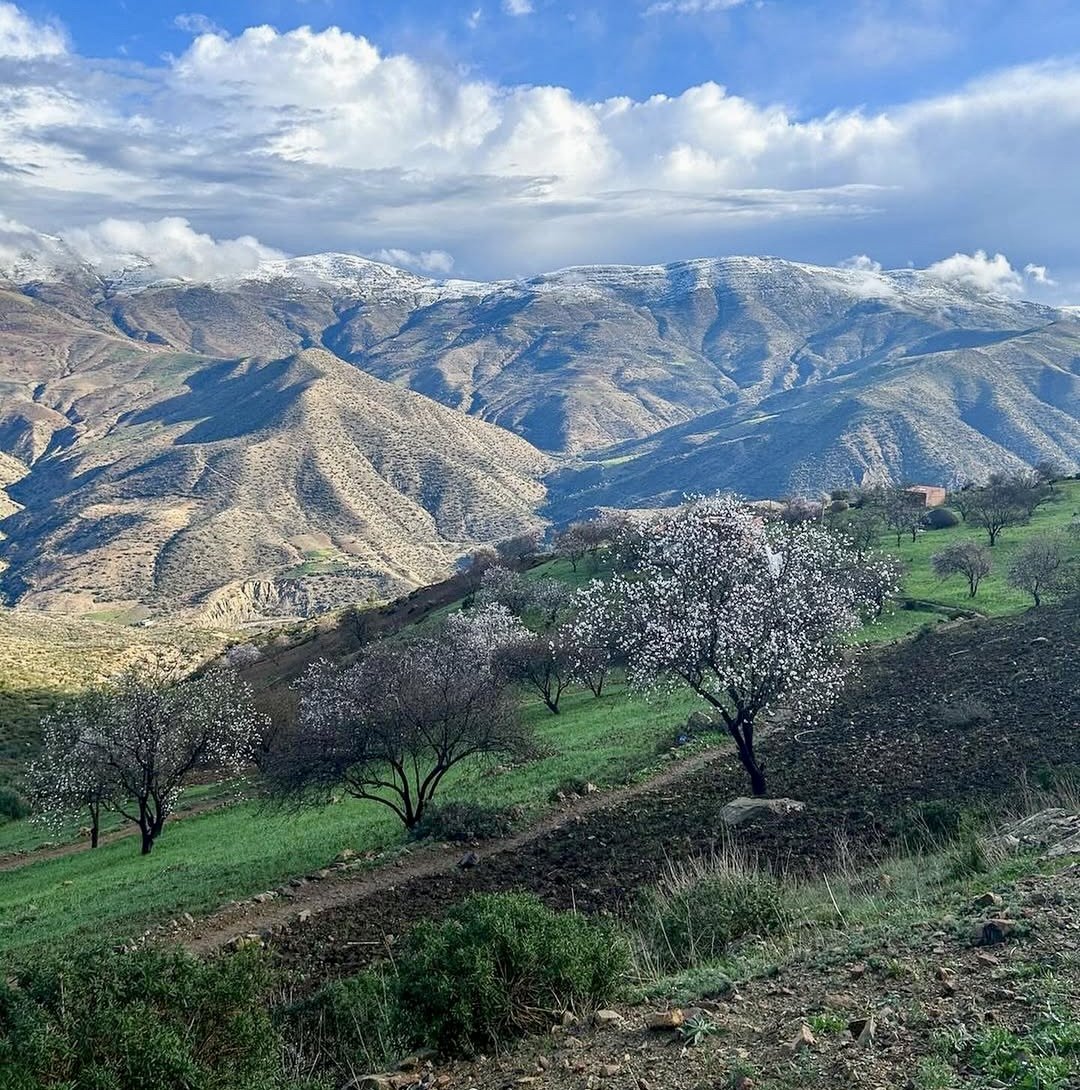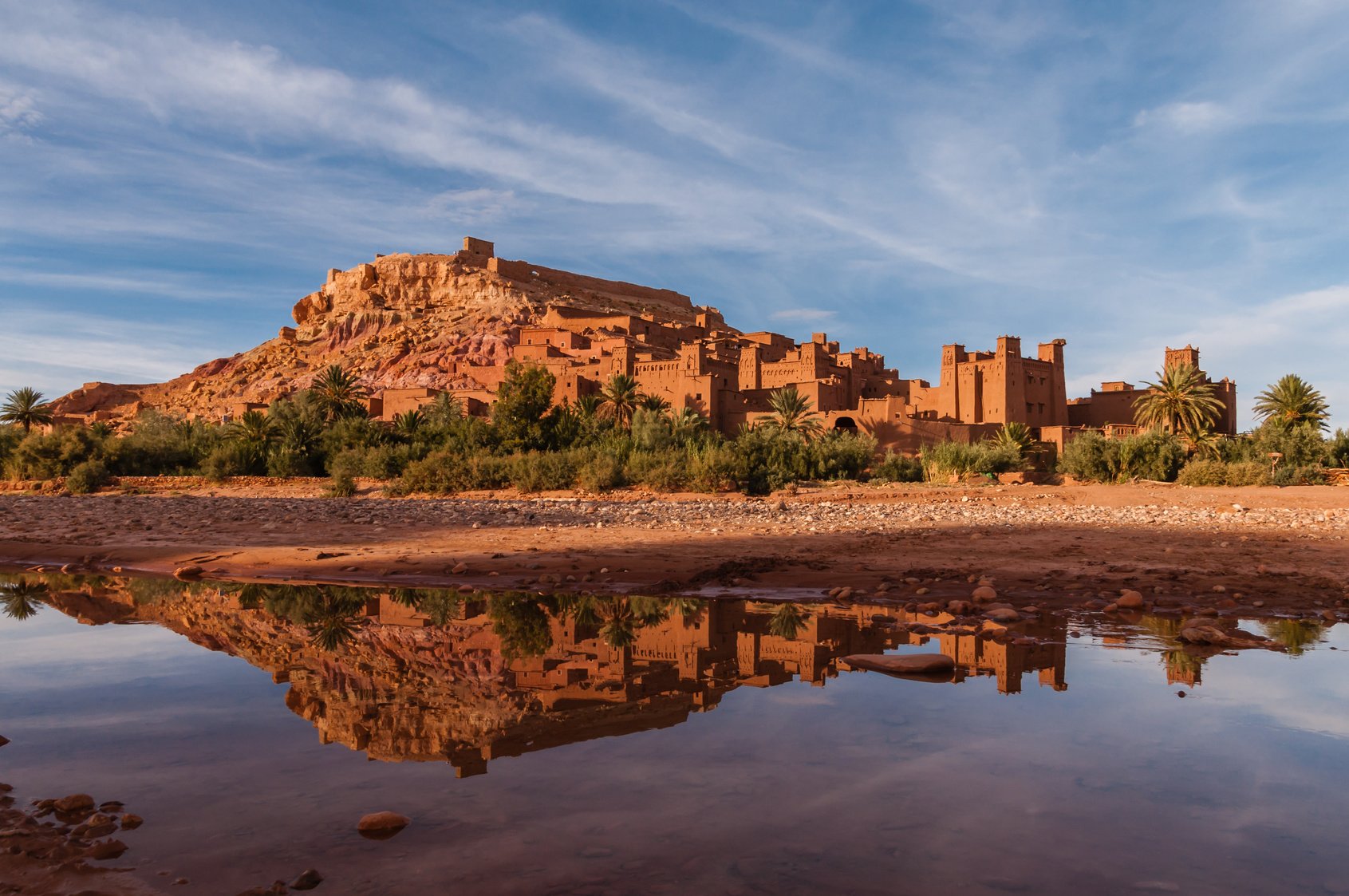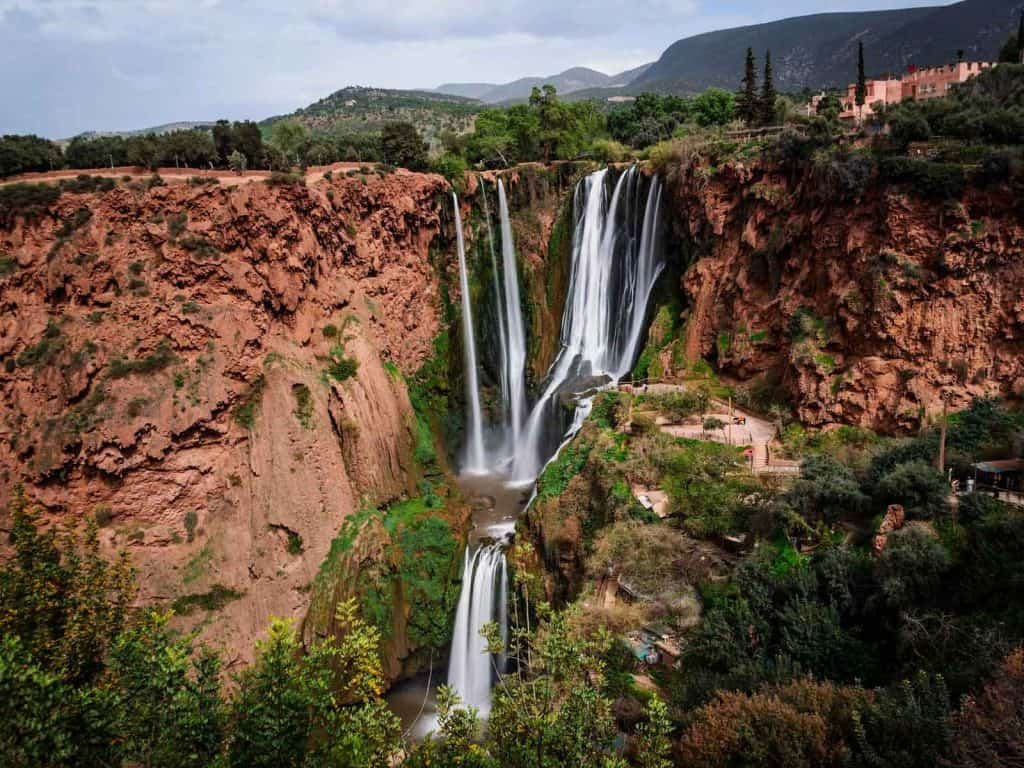
Choose your private tour adventure with wolf2raven…
*Sample itineraries and add-on services below.
Discover Morocco’s rich geological story on our 5-Day Northern Moroccan Geo Tour—designed for curious travelers, mineral lovers, and history buffs alike. From ancient mining tunnels and fossil beds to artisan markets filled with gemstones, this immersive journey winds through Fes, the Rif Mountains, Chefchaouen, and the Atlantic coast. Along the way, you’ll explore breathtaking landscapes, meet local craftsmen, and uncover the natural treasures that shaped Morocco’s past and present.
Join me on a 5-Day Southern Morocco Journey—an unforgettable blend of nature, history, and hidden gems, starting and ending in vibrant Marrakech. Together, we’ll wander through ancient walled cities, marvel at pink granite mountains, explore Amazigh villages, and trace Morocco’s rich traditions from silver craftsmanship to saffron fields. This immersive adventure takes you off the beaten path—from the Atlantic coast to the heart of the Anti-Atlas Mountains—where every stop reveals a new story.
Join us on a 7-Day Morocco Journey—a rich blend of history, nature, and mineral discoveries designed for curious travelers eager to explore Morocco’s hidden layers. From imperial cities and ancient medinas to remote mining towns, dramatic caves, and breathtaking waterfalls, this journey takes you deep into the country’s heartland. Along the way, you’ll meet artisans, explore underground wonders, and trace Morocco’s geological story across valleys, mountains, and historic sites.
Sample Itinerary for Northern Morocco Geology Tour
DAY 1. Geological & Mining Beginnings Meknes > Fes
We’ll leave Meknes early and head to Fes, where we’ll start the day with a visit to the Fes Geology Museum (if accessible). This small but interesting collection showcases specimens from Morocco’s rich geological history, including fossils, crystals, and minerals from different regions of the country.
Afterward, we’ll explore the Chouara Tanneries, where we’ll see how natural minerals like limestone and alum are used in traditional Moroccan leather-making. We’ll also meet with local artisans in the medina who use minerals in pottery and crafts.
To wrap up the day, we’ll visit a local mineral and fossil market where we can browse and possibly pick up some unique specimens from Morocco’s diverse geology.
DAY 2. Beni Bou Ifrour Mining Area Fes > Beni Bou Ifrour
After breakfast, we’ll drive toward Beni Bou Ifrour (~2.5-hour drive near Nador), an area known for its iron and manganese mining operations. We’ll explore old mining tunnels and look for specimens of hematite, goethite, and pyrolusite—common minerals found in the region.
On the way back, we’ll stop at a geological formation in the Beni Snassen Mountains, where we might see folded limestone formations and fossil-rich rock layers. Once back in Fes, we can take the evening to relax or visit another mineral market.
DAY 3. Rif Mining Sites Fes > Chefchaouen
Today, we’ll take a scenic drive through the Rif Mountains, stopping at an old fluorite, barite, and lead mine along the way. These mountains are home to some of Morocco’s most beautiful and lesser-known mineral deposits.
Once we arrive in Chefchaouen, we’ll explore the blue-painted medina and its unique artisan markets. Many of the shops here sell handmade products, including locally sourced minerals and gemstones. We’ll visit the Grand Mosque of Chefchaouen before hiking up to the Spanish Mosque for a peaceful sunset view over the mountains.
DAY 4 Jebilet Mining Region Chefchaouen > Rabat
We’ll start the morning with a drive toward the Jebilet mining region, a well-known area for copper, lead, and silver deposits. Here, we’ll have a chance to explore some abandoned or active mines and look for specimens in the field.
Afterward, we’ll continue to Rabat, where we’ll take a break from geology and visit the Chellah Necropolis, a site that blends Roman ruins with medieval Islamic history. We’ll end the day with a relaxed walk through the historic medina.
Day 5 Coastal Mineral & Geology Rabat > Casablanca
For our final day, we’ll visit Mohammedia’s coastal cliffs, where we’ll find fossilized marine deposits from millions of years ago—evidence of Morocco’s ancient seabed.
In Casablanca, we’ll visit the Habous Quarter, a charming neighborhood where we can explore more markets, including some selling minerals, fossils, and gemstones.
Sample Itinerary for Southern Morocco Cultural Tour
DAY 1. Ancient Walls & Souss Valley Marrakech > Taroudant
After breakfast, we’ll leave Marrakech behind and head south through the fertile Souss Valley, where argan and citrus groves line the road. The High Atlas Mountains loom in the distance, hinting at the adventure ahead.
We’ll arrive in Taroudant, often called the “Grandmother of Marrakech” for its stunning red-mud ramparts and lively, authentic medina. After lunch in a traditional riad, we’ll take a relaxed walk through the city—exploring the silver souk, admiring the centuries-old walls, and, if you’re interested, visiting the old Jewish quarter or stopping by a local tannery.
We’ll wrap up the day with dinner in a peaceful riad courtyard. The evening is yours to relax or wander Taroudant’s quiet streets as the sun sets behind the walls.
DAY 2. Fortified Walls & Silver Craftsmanship Taroudant > Tiznit
After a leisurely breakfast, we’ll continue southwest toward Tiznit—a town famous for its silver jewelry and well-preserved 19th-century ramparts. Along the way, we may spot goats perched in the branches of argan trees—a classic sight in this region.
In Tiznit, we’ll visit the historic medina, stopping by a silver cooperative where artisans still craft traditional Berber jewelry by hand. There’s time to explore or shop if something catches your eye. We’ll enjoy a local lunch, then head toward the nearby coast for a relaxed walk along the Atlantic, where the sea breeze meets the desert air.
We’ll settle in for the night—either staying in Tiznit or at a nearby coastal guesthouse, depending on your preference. Dinner features fresh fish or local tajines as we unwind.
DAY 3. Into the Heart of the Anti-Atlas Mountains Tiznit > Tafraoute
After breakfast, we turn inland and climb into the Anti-Atlas Mountains—a landscape of pink granite boulders, deep gorges, and sweeping views.
We’ll arrive in Tafraoute, nestled in a natural amphitheater of glowing red rocks. The afternoon is open for exploring: visit the Painted Rocks, giant boulders transformed by a Belgian artist’s colorful vision; wander through nearby Amazigh villages where homes blend into the cliffs; or stop by local cooperatives for traditional slippers and argan oil.
We’ll enjoy a mountain dinner—rich with almonds and local spices—and stay overnight in Tafraoute. The skies here are incredible for stargazing.
DAY 4 Berber Villages & Geological Wonders Tafraoute > Ameln Valley
Today is all about slowing down and diving deeper into the Ameln Valley, known for its lush oases, ancient granaries, and dramatic peaks. We’ll visit Oumesnat, one of the valley’s oldest villages, where traditional homes cling to the cliffs.
If you’re interested, we can hike through palm-filled gorges or visit the Anergui granary, learning about centuries-old methods of food storage and survival in harsh mountain conditions. Along the way, we’ll pass fascinating rock formations and layers of geology exposed by time.
We’ll settle in a local guesthouse or traditional home for the night—dinner served with valley views. This is a true off-the-beaten-path experience.
Day 5 Scenic Mountain Roads & Valleys Ameln Valley > Marrakech
After breakfast, we’ll start our journey back to Marrakech, winding through Tizi Mlil Pass—one of the most scenic mountain routes in the region. The landscapes shift from stark mountains to fertile valleys and back to the plains.
Along the way, we’ll stop for a relaxed lunch and take time to stretch or photograph the vistas. There’s an option to pass through Taliouine, Morocco’s saffron capital, for a brief visit if you’re curious about this precious spice.
We’ll arrive back in Marrakech by early evening. The journey ends, but the mountains, valleys, and hidden villages will stay with you long after.
Sample Itinerary for Cultural & Geological Tour
DAY 1. Imperial History & Hidden Treasures Casablanca > Meknes
After breakfast, we’ll head toward Meknes, one of Morocco’s historic imperial cities. The road winds through olive groves and rolling hills.
We’ll explore Meknes’ Bab Mansour Gate, and the historic medina (where my shop is located), known for its traditional copper and brass markets. If you’re interested, we can visit a local artisan workshop.
We will enjoy dinner made by my family and after settle into a charming riad in the medina—perfect for soaking in Meknes’ old-world charm.
Day 5 Rugged Valleys & Mineral Traces Taza > El Ksiba
After breakfast, we’ll travel south into the heart of the Middle Atlas, crossing high ridges and lush valleys as we approach El Ksiba—a peaceful mountain town far off the tourist trail.
We’ll explore the region’s geology-rich valleys, known for quartz veins, iron deposits, and fascinating landscapes. Optional stop in a nearby Amazigh village to learn about local crafts and farming traditions.
We’ll overnight in a simple but welcoming mountain auberge, enjoying a traditional home-cooked meal and the crisp mountain air.
DAY 2. Morocco’s Mining Heartland Meknes > Mibladen
After breakfast, we drive east into Morocco’s mineral-rich country, passing the Middle Atlas foothills toward Mibladen near Midelt—famous for its rich mineral veins.
We’ll visit the old mining area, where vanadinite, barite, and cerussite have been pulled from the earth for over a century. This is a great area to explore in the mines and do some self collecting.
We’ll stay in Midelt for the night, enjoying a hearty mountain dinner and resting up for the next leg of the journey.
Day 6 Nature’s Grand Finale El Ksiba > Ouzoud Waterfalls
After breakfast, we’ll make our way toward the spectacular Ouzoud Waterfalls, traveling through scenic valleys and olive groves.
Spend the afternoon hiking around the falls, spotting Barbary macaques, and relaxing in the misty air. If you’re interested, we can visit limestone caves nearby or a local olive oil press.
We’ll stay near the falls in a peaceful guesthouse, enjoying dinner with views of the cliffs and cascading water.
DAY 3. Valleys, Mountains, & Ancient Medina Midelt > Fes
We’ll travel north, crossing the Ziz Valley, through fertile plains, and past ancient cedar forests. The geology along this route tells the story of Morocco’s mountains and mineral riches.
Arriving in Fes, we’ll dive into the ancient Fes el-Bali medina—exploring madrasas, tanneries, artisan souks, and tile workshops.
We’ll stay in a traditional riad inside the old city, with dinner served in a historic setting.
Day 7 Scenic Return & Reflections Ouzoud > Casablanca
After breakfast, we begin the drive back to Casablanca through the fertile plains.
If time allows, we can make a stop in El Jadida to explore the Portuguese Cistern—a hauntingly beautiful underground chamber.
Arrive back in Casablanca by evening. If you’re up for it, we can visit the Hassan II Mosque or enjoy a final dinner overlooking the Atlantic.
DAY 4 Caves, History, & Geology Fes > Taza
After breakfast, we’ll drive east toward Taza, a city often overlooked but rich in history and perched between mountains and plains.
We’ll explore Taza’s old medina and fortress walls, then head into the nearby Friouato Caves—one of North Africa’s largest cave systems. Descend into the earth, passing limestone formations and vast caverns—a geological wonder.
We’ll stay overnight in Taza or nearby, enjoying a quiet dinner and soaking in this rarely visited part of Morocco.
Add-On Services
Looking to add in a little more fun? Choose up to 3 additional services/excursions to include on your trip…


